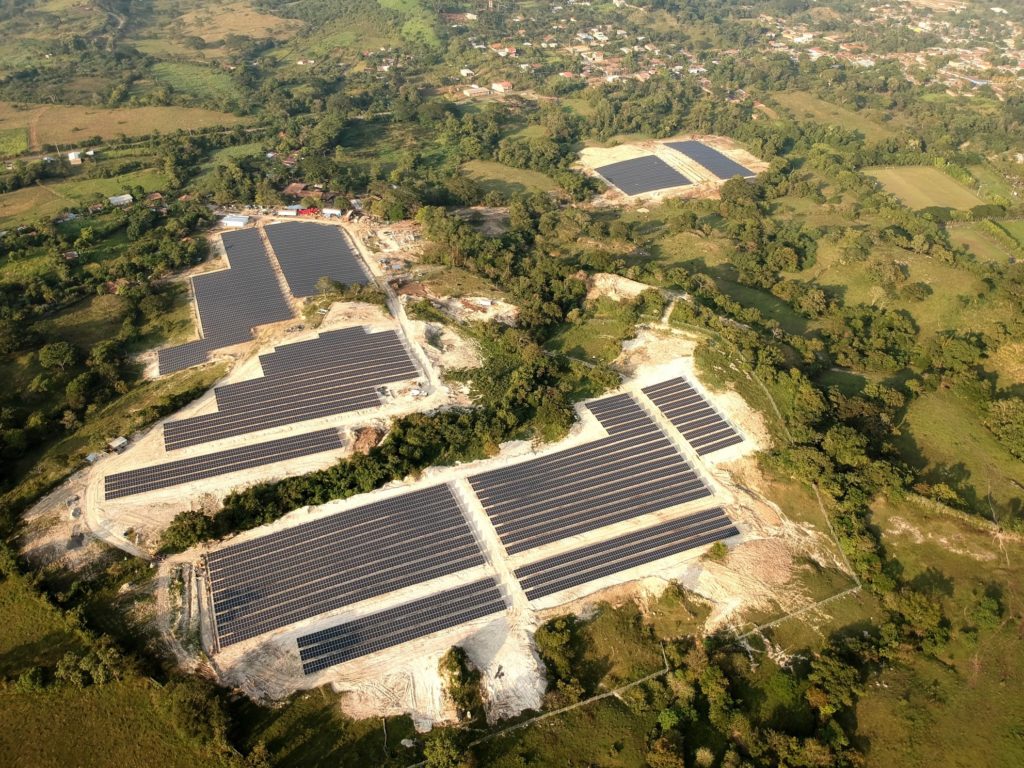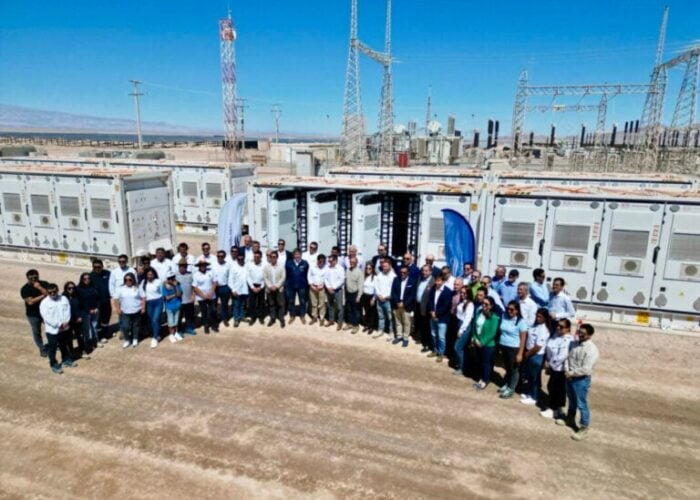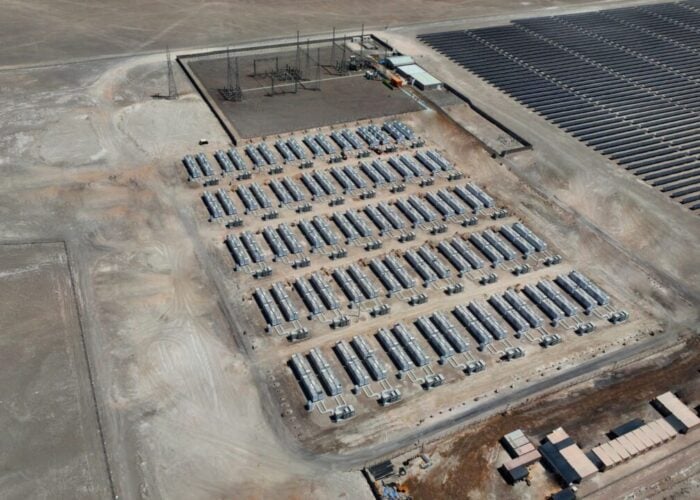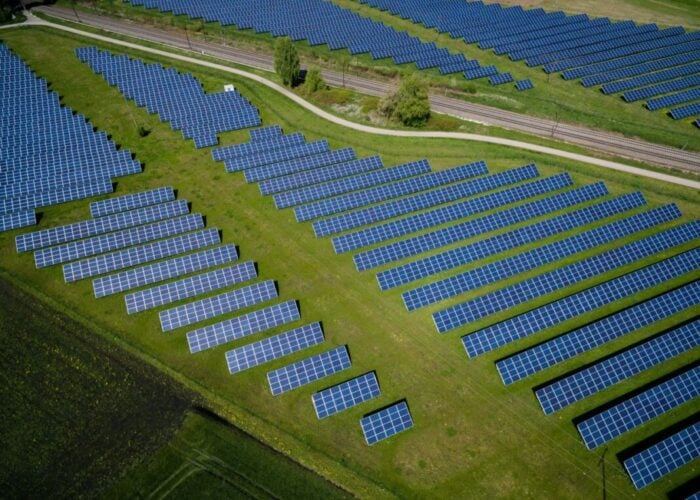
Latin America is fast becoming a lucrative solar market as countries ramp up deployment efforts in line with national climate commitments. While two major markets stand out – Brazil and Chile – more and more countries are stepping up with attractive environments for solar PV, and none more so that Colombia.
That’s according to Martin Vogt, CEO of MPC Energy Solutions, a renewables developer with more than 250MW of projects across Latin America. Vogt says that while more established markets like Brazil and Chile represent great investment opportunity for firms with the size and infrastructure to access them, smaller and less mature markets offer significant potential for early movers.
Unlock unlimited access for 12 whole months of distinctive global analysis
Photovoltaics International is now included.
- Regular insight and analysis of the industry’s biggest developments
- In-depth interviews with the industry’s leading figures
- Unlimited digital access to the PV Tech Power journal catalogue
- Unlimited digital access to the Photovoltaics International journal catalogue
- Access to more than 1,000 technical papers
- Discounts on Solar Media’s portfolio of events, in-person and virtual
Specifically, he points to Colombia and Panama as markets to keep an eye on. The Colombian market in particular was almost non-existent until two years, says Vogt. “The big white space on the map of Latin America, with zero installed [renewables] capacity if you exclude large-scale hydro,” he says. This is despite Colombia being one of the largest economies in Latin America with a high potential for solar PV.
Meanwhile, Panama – a strong, stable market looking to increase its meagre levels of renewable capacity – also represents an attractive setting for solar PV, adding that the country’s willingness to trade in US dollar also gives it an edge.
Colombia leading the way among challengers
Out of all the markets in Latin America that are striving to reach the maturity of Brazil and Chile, Colombia leads the way, says Vogt. There are a few reasons for this: the size of its economy and relative lack of solar capacity; a liberalised regulatory framework that facilitates bilateral agreements; and a government keen on increasing solar deployment in a country with a conducive environment.
Colombia aims for renewables to make up 14% of the country’s energy mix this year, compared to the paltry 0.2% it was back in 2018. By 2020, solar made up just 1% of Colombia’s renewable energy portfolio, compared with 4% from wind, 2% from biomass and 93% from hydropower, according to the International Renewable Energy Agency (IRENA).
But things are changing. At the start of this month, Colombian power distributor Air-e said 22 companies had reached the pre-qualification stage in its privately held, 10-times oversubscribed renewables auction, with proposals totalling 2.5GW. And the country’s third renewables auction held in October last year awarded contracts to 11 solar PV projects with a combined capacity of 796.3MW, with the winning bids coming in at COP155.8/kWh (US$0.0414/kWh), close to what Vogt says MPC can produce at US$0.04-0.05c/kWh.
“The success of this new auction shows that the energy transition in Colombia is a reality,” Minister of Mines and Energy Diego Mesa said following the auction results.
“The solar PV installed capacity [in Colombia] has grown from 50MW in 2018-19 to about 2.5GW by the end of this year or mid next year, depending on how fast these projects can be built under the disrupted supply chain,” says Vogt.
James Ellis, head of Latin American research at BNEF, says the research organisation sees potential in the Colombian market due to approaching auction deadlines. “In their second auction (November 2021), Colombia awarded around 800MW of solar and projects must start delivering power in January 2023,” says Ellis. “As a result, we expect to see bumper new additions of over 1GW in the period 2022-23, pushing total forecast new capacity to 1.5GW through 2024. This is quite significant considering the small size of the utility-scale solar market today, which is roughly 325MW or so.”
The growth in solar will also be supported by economic realities in Colombia – it is one of the largest economies in Latin America with the third largest population. Energy consumption is predicted to grow significantly over the next 20 years and the country is targeting carbon neutrality by 2050, meaning it will need to up its energy production significantly. Mesa said Colombia will have more than 2.8GW of deployed renewables by the end of 2022 and Vogt expects more than 10GW to be added by 2030.
Given this backdrop, Colombia has decided to liberalise its energy economy. “The regulatory framework gives offtakers and generators a tremendous amount of commercial freedom to forge bilaterally agreements, which is not necessarily the case elsewhere,” says Vogt. “There’s no sort of regulation that sits with a monopoly that would prevent market growth.”
He says a loose regulatory framework means there is less red tape and more flexibility for generators to sign lucrative power purchase agreements (PPA) with corporates eager to secure energy supply and decarbonise their operations.
This is not the only advantage present in the Colombian market. While there are no formal government support schemes for solar, with the government seeing it as a competitive technology, Colombia offers tax breaks for companies that deploy renewables in the country and, similar to Brazil, there is no VAT added to solar imports, helping to drive deployment in a country with little to PV manufacturing.
Panama one to watch
Meanwhile, Panama also constitutes an up-and-coming market for solar PV, says Vogt. With very low levels of installed renewables, strong and stable economic growth and a willingness to trade in US dollars, Panama is a key target for MPC, he says.
Historically, Panama has relied heavily on coal for its energy needs but the central American country started to install solar PV projects from 2013. Today, it has around 250MW of installed capacity but a significant and growing project pipeline upcoming.
An analysis from the US’s National Renewable Energy Laboratory (NREL) noted how Panama has significant solar potential – 185,228,630MWh/year, which is about 33 times the nation’s annual electricity consumption.
Although “naturally smaller”, the Panamanian market will see strong growth in the near-term, says Ellis. “Total utility-scale capacity there should nearly double from around 250MW today, but this is driven primarily by a handful of key projects”.
Panama is home to a growing economy, has a stable government and is keen to accelerate its PV deployment, says Vogt, adding that it is a market MPC has its eyes firmly on. “It has a significant economic growth and economic stability, and it has very little installed solar and wind capacity. So, for us, this is a good combination,” he says.
Furthermore, the country also allows trade in US dollars which reduces any risk from currency fluctuations – currently an issue for developers in countries like Brazil – and makes the market more appealing to large, foreign investors who have most of their operations in US dollars.
Latin America is ripe for solar deployment. Low levels of deployment across much of the region combined with newly created climate change targets have made countries eager to accelerate PV roll out. This is being through a number of fiscal and monetary measures, while a sunny environment and high altitudes in some areas create the perfect environment for solar energy. Although there are clearly some lead markets already, there is still plenty of opportunity for companies to invest in up-and-coming markets before they become saturated or incentives are reduce, which is simply a matter a time.






